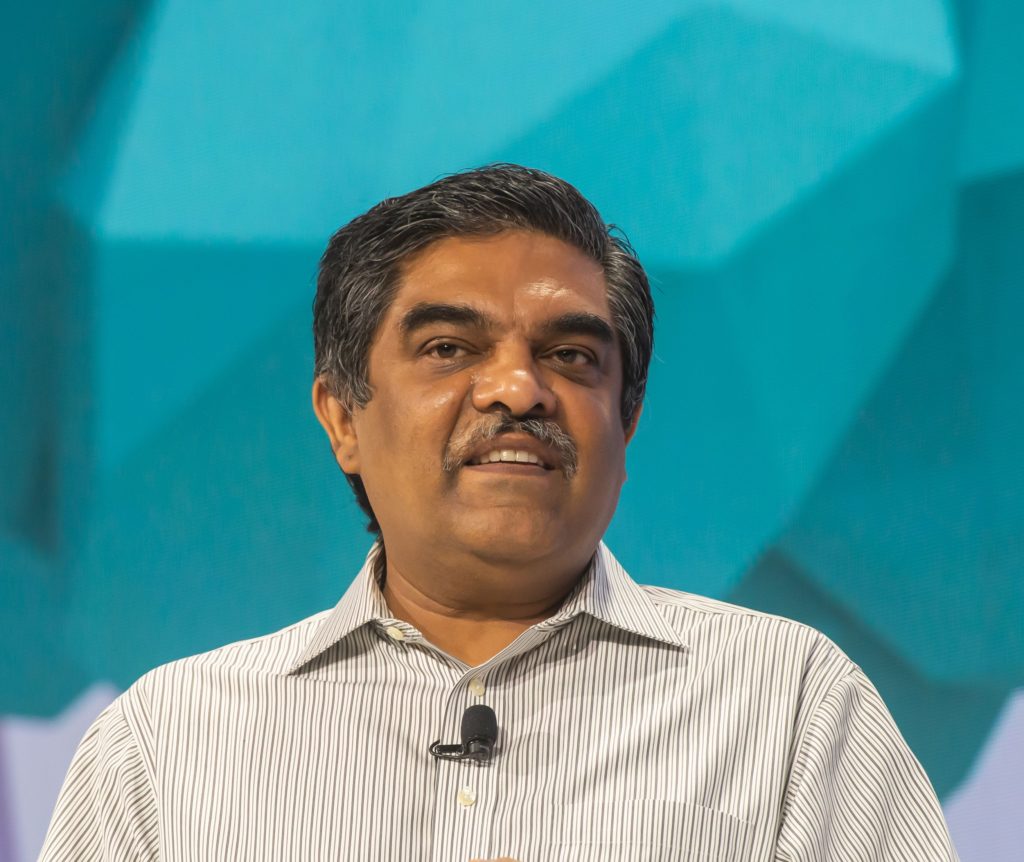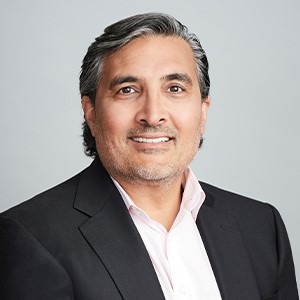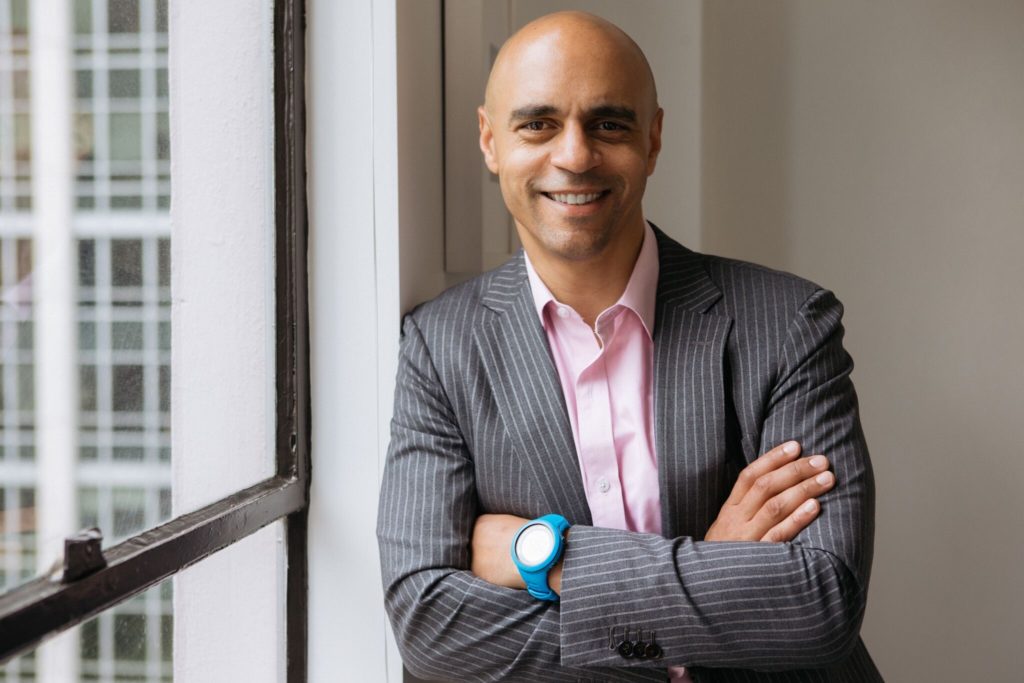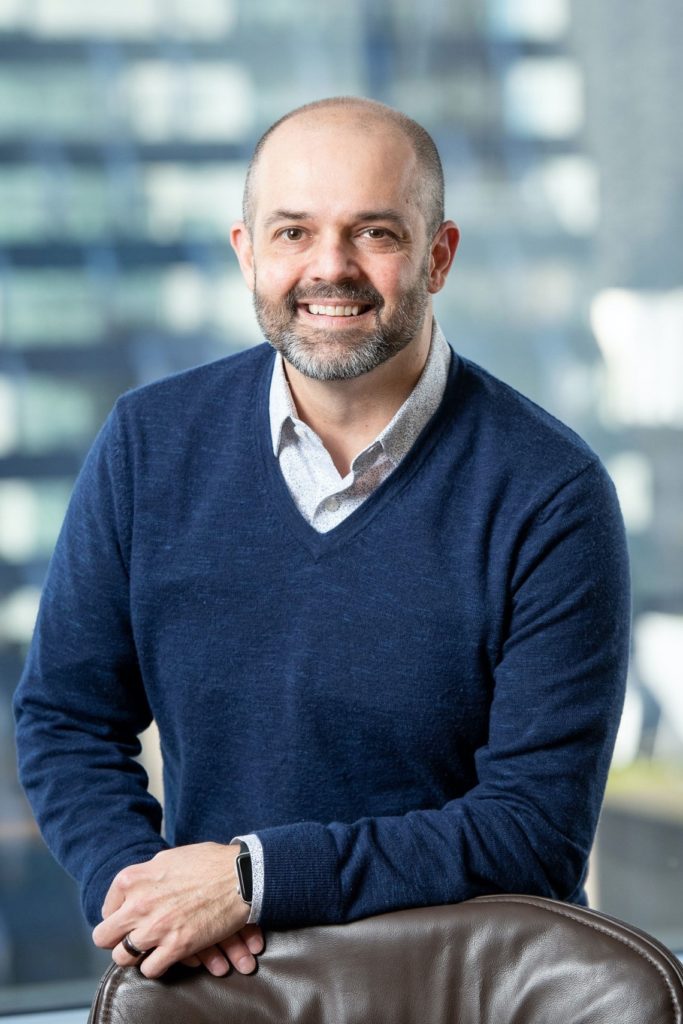Mike Jackowski and Nag Vaidyanathan met at Allstate in the early aughts, when Jackowski was a divisional CIO and Vaidyanathan was a senior director building the giant insurer’s connected platform. Today, they are the CEO and CTO, respectively, of Duck Creek Technologies, a publicly traded company providing core system solutions to the property and casualty insurance industry. “We have a special relationship,” Jackowski said.

In this relationship, the CEO rarely makes a decision without feedback from Vaidyanathan, a member of the executive leadership team sitting at the strategy table. “I may miss something important without Nag’s input,” said Jackowski. “Nag has this incredible curiosity around our business strategy and what our customers need. When he comes up with an idea involving a slight tweak in our strategy, I often say, `What would it take to enable it?’”
Privy to Jackowski’s comment during the Zoom interview, Vaidyanathan interjected, “Mike makes me think deeper. In this world where technology is this evolving thing, we’re each other’s coach. Having a seat at the strategy table asking and receiving questions, all that back and forth, is integral to this journey.”
Like many companies seeking to enhance the customer experience, Duck Creek Technologies, with nearly 1,750 employees across the world and FY 2021 revenue of $260.4 million, has made a massive financial commitment to become a cloud-centric organization. Using the provider’s enterprise software-as-a-service (SaaS) solution, insurers are able to navigate uncertainty and capture market opportunities.
“Investing in my relationship with Nag, making him visible across the organization and empowering him to enable the technologies that drive the business outcomes we want, is how a CEO today will make progress,” Jackowski said.

Other chief executives share a similarly close strategic relationship with their CTO or CIO these days. Much like the CFO and finance function have evolved through the years into the CEO’s key strategic partner and front office function, respectively, the CIO and IT function are following the same path. “CEOs have a greater appreciation of the capabilities of their CTO or CIO and are spending more time with them than ever before,” said Greg Douglass, global lead for Technology, Strategy & Advisory at Accenture.
Several informal surveys of chief executives by the IT services and consulting firm indicate that CEOs spend 20 percent to 40 percent more time with their CTOs or CIOs than they did two years earlier, Douglass said, adding that IT leaders also are involved in more one-on-one interactions with other executive management leaders and board members of both public and private companies. “You can’t accelerate an entire corporate transformation otherwise,” he said.
“Whereas the CIO or CTO was always an important member of the band, they hung back in the shadows, keeping the beat on the bass guitar,” Douglass said. “In leading the digital transformation on behalf of the CEO, they’ve been thrust into the limelight. They’re the new corporate rockstar.”
Leading the Digital Band
Jim Carr is rocking it over at BentallGreenOak (BGO), leading the New York-based global real estate investment management advisory firm’s technology strategy and IT organization as chief innovation officer. “Jim is driving so much change here,” said Sonny Kalsi, co-CEO of the publicly traded company, which serves 750 institutional clients in 28 cities across 13 countries with $78 billion in assets under management.

This change is needed, Kalsi maintained. BGO was formed in 2019 following the merger of century old Bentall Kennedy with an upstart smaller rival, GreenOak Real Estate. At the time, Carr led One11 Advisors, a strategic technology consulting firm. “Our COO (Andrew Yoon) knew Jim and said he’s the guy to hire to help us make a significant step-change in our platform,” said Kalsi. “He did such a good job we brought him into the C-Suite (in early 2021).”
Yoon had retained One11 Advisors in 2016. “I knew Andrew back in the day when Bentall had $7 billion in assets under management,” said Carr. “My firm was brought in to plot what the tech platform should look like. Now, here I am again as the CIO this time plotting the same thing, although the firm’s managing $78 billion in assets.”
BGO’s rapid and impressive growth derived largely from a series of acquisitions over the past eight years. Byproducts included a very large IT organization and myriad technology solutions bolted on to the platform Carr helped construct in 2016—hence Kalsi’s interest in a step-change transformation.
“A big part of the digital transformation I lead is to consolidate and retire tools that no longer serve our future needs,” said Carr. “My remit is to drive adoption of the technologies that enable the innovation and aspirations that Sonny and the global leadership have set for the firm. Their interest is in branding BGO as a dynamic and agile IT-driven organization.”
Carr is plotting another technology platform, this time on a SaaS basis. Finding the right platform took some time, due to BGO’s multifaceted operations. On behalf of its institutional clients, the firm buys, builds, manages and sells retail, multifamily, office and industrial real estate.
“Finding the right platform to do everything we do was a challenge, given our complexities and continuing expansion,” said Carr. “Our digital needs are diverse and dynamic, but it’s a pretty fragmented set of products out there. We finally found a platform (Asset Investment Management or AIM) that gives clear visibility into our asset performance and has a business intelligence tool that monitors our asset portfolio.”

Using the tool, BGO asset managers can analyze historical net operating income trends against occupancy trends across asset classes like industrial or residential, then roll up this information on a consolidated basis to detect interesting patterns and anomalies to inform business decisions.
“Jim’s leadership of the strategic initiative is crucial to our future,” said CEO Kalsi. “We need tie together all the data from our 26 offices around the world in different countries to know how we’re doing and where we need to go.”
He added, “To be the firm of choice, you need to be forward leaning, focusing on where the puck is going as opposed to where it’s been. That’s what Jim is doing. He thinks about things I could never come up with. His ideas are great. He’s more than a tech guy, he’s the innovation guy helping us provide the best products and outcomes for clients.”
Loud and Clear
CTO Dan Brown received similar plaudits from Jaja Okigwe, CEO of healthcare benefits administration provider First Choice Health. “Dan and I knew each other at Premera Blue Cross,” said Okigwe. “Although we didn’t work together, I watched him and thought this guy is really good at what he does. I should keep an eye on him.”

Okigwe was the senior vice president of strategic development at Premera and Brown was the director of enterprise architecture, solution engineering and technology strategy. When Okigwe was appointed CEO at First Choice Health in 2019, he reached out to recruit Brown as CTO. “It’s one of the best decisions I made,” he said.
First Choice Health was in the middle of its digital transformation at the time, but Okigwe felt it needed to move in a bolder new direction. As he put it, “The house had been constructed but the rooms needed to be remodeled.”
The impetus was his plan to rapidly enlarge the company’s geographic footprint. In 2018, First Choice Health provided services in four states. It has since tripled that number and is aiming to expand to 22 states in the next few years. At present, the health benefits administrator has about 800,000 people under management and processes $5.1 billion in healthcare claims annually. Brown’s remit is to build a technology platform that can keep pace with this growth.
“When I started here, technology was a cost center, but Jaja is that rare CEO who looks at technology investments as an enabler versus an expense,” he said. “He’s a mastermind on the healthcare side, but I’m fortunate that he also understands where to mesh technology and healthcare to achieve a greater return.”
The CTO is aiming to construct a platform providing more operating agility ahead, given the company’s planned geographic expansion. “The current architecture is inflexible, when we need it to be pliable and adaptable,” Okigwe explained.
Brown hit the ground running, until Covid-19 put some hurdles in his way. He’s now back on track, conferring with the company’s medical management professionals and other parts of the organization to better understand their needs. He’s also in talks with different technology providers to deliver this solution. “I’m doing a lot of listening,” he said.

“We both are,” Okigwe chimed in. “We have a group of C-level executives who regularly discuss the key product initiatives with me. Dan helps us understand how these initiatives will play out, in terms of technology fulfillment. I ask him to be frank in his opinions. He provides valuable business guidance, which is something very few CTOs did in the past.”
Brown agreed the CTO role has evolved. “Ultimately, every CEO is looking to adapt faster to business opportunities and risks,” he said. “As business and technology become more integrated, the CTO is looked to for guidance and support on strategy, operations and technology. Automation, data analytics, natural language processing and AI push brain cycles, helping the CEO make better decisions using accurate and real-time information.”
Douglass at Accenture shares this perspective. “Today’s CIO or CTO must be financially savvy, know how to market the brand, understand operational dimensions of the company, and know how technology can support the transformation wanted by the CEO,” he said. “They must also be able to talk to a CEO in the language of business about the value they can deliver.”
At Duck Creek Technologies, Jackowski and Vaidyanathan regularly engage in such dialogue. “Any non-tech CEO needs to become well-versed in digital, cloud and mobile technologies and every CTO needs to know the business, inside-out; that’s where the relationship is going,” Jackowski said. “When you have this, and we do, you’re positioned to get the best business outcomes and financial results.”
Small wonder Douglass said the CIO title has new meaning today. “We used to joke that the CIO acronym stood for Career Is Over. Now it stands for Career Is Outstanding.”









